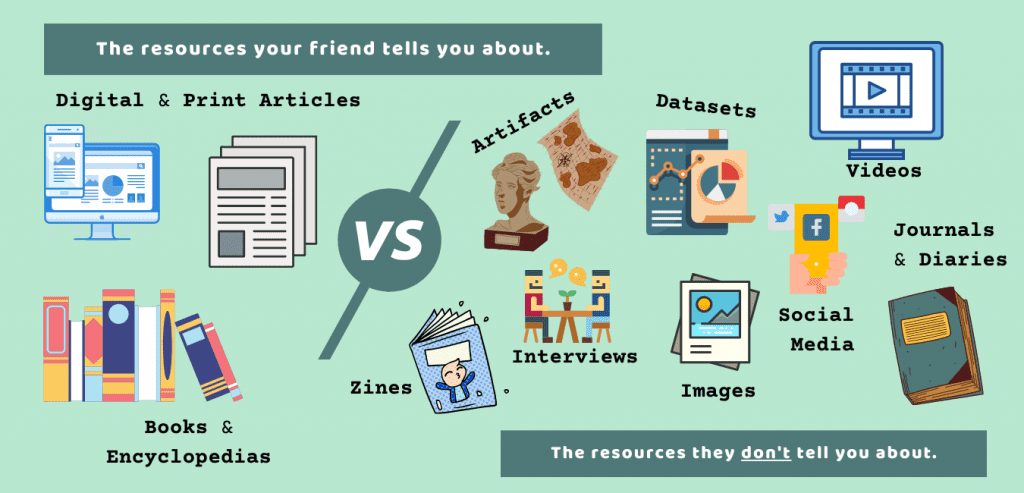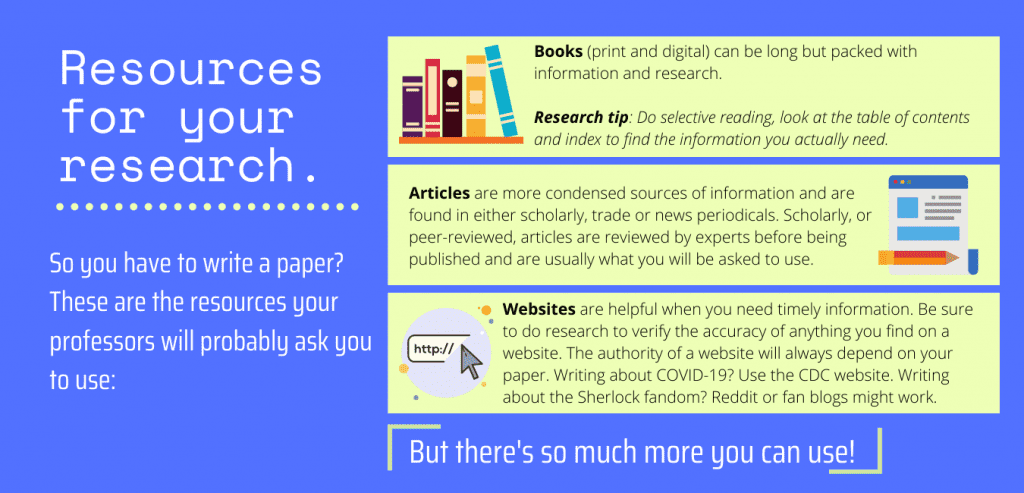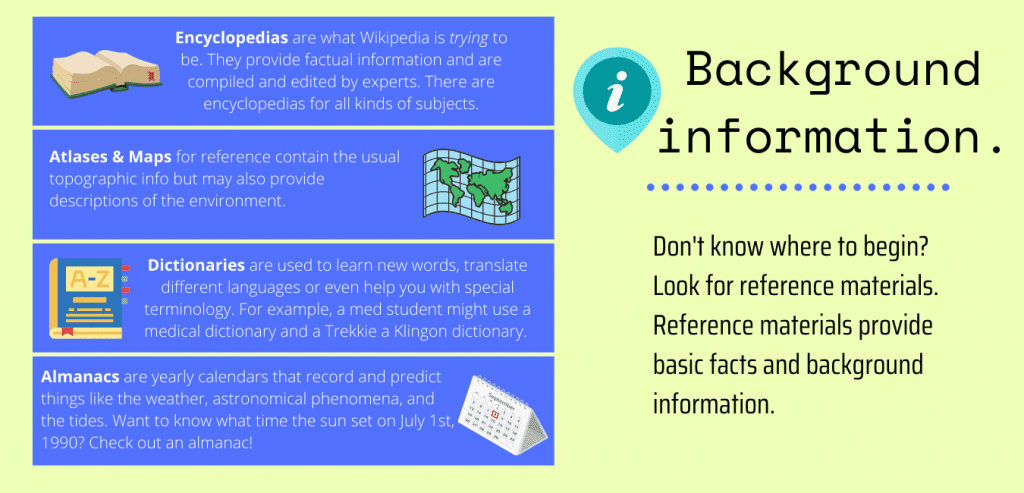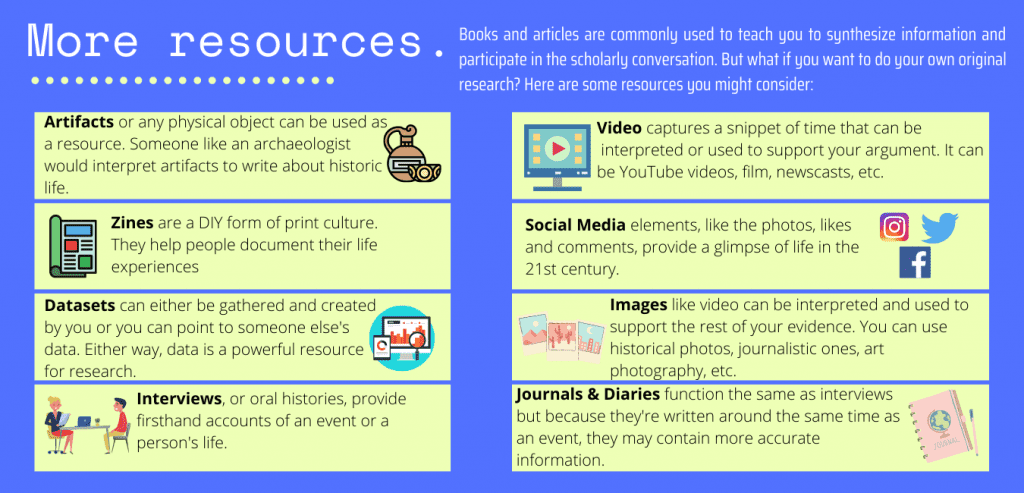
What type of resource is the right fit for your project
There is an endless amount of information available and it comes packaged in many different ways. Books and articles are two major types of resources but there are also images, zines, diaries, videos, interviews, artifacts, datasets, social media posts… and on and on. How do you know what to use for your project?
The library’s search tool is called OneSearch and it can point you to individual items. But we also subscribe to collections of information grouped by topic or resource type. These are databases (like digital filing cabinets). More about those in the ‘Try a Database Instead’ section.
So, to choose a type of resource: think about what point you’re trying to make and what kind of supporting information will help you communicate your message effectively. A paper arguing for the power of social change through street photography may use examples from Instagram. Whereas a paper analyzing how fashion influences our ideas of beauty may use staged, highly produced studio photography.
Here are some questions to think about when choosing resources:
- What is the scope (range) of your project? Is it about one event or about similar events in a decade?
- How long should the finished product be? Is it a 3-5 page paper, or a 10-15 page paper?
- Is the goal to compare two or more points of view?
- Did the instructor specify a certain type of resource (peer-reviewed article, physical book, primary source)?
Resource to Project Matching
3-5 page paper about social media responsibility:
- 2 articles and a reference entry.
- The reference entry (encyclopedia, specialized dictionary) explains what social media is and each article might present a different viewpoint that you compare.
5-10 page paper about school shootings
- 3 or 4 articles, a book chapter or a short book, primary source material
- In this kind of paper, you will need to explore the topic more in-depth. So you’ll want more research on the topic. You probably will also need to develop your own argument and present it to the reader along with supporting documentation (research in the subject area).
Need to know: What is a “peer reviewed” journal article?


